-
Let This Year Be The End Of Your Foot Pain
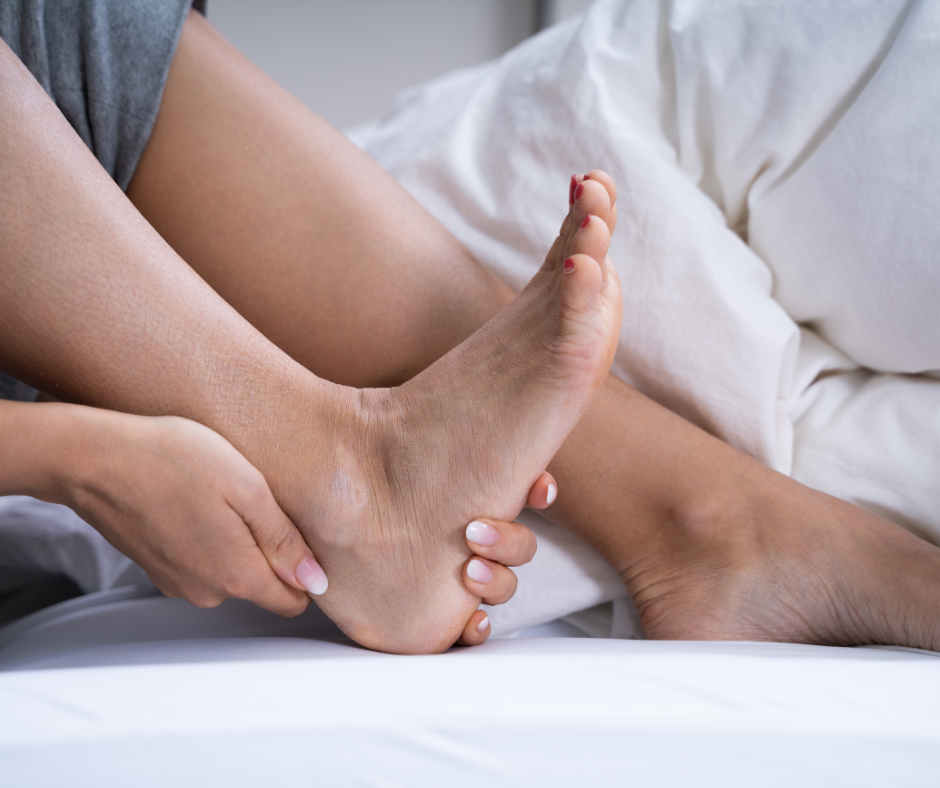
As we welcome the new year, many feel motivated to take steps towards self-improvement. Some may begin by improving their daily routines, including increased healthy exercise habits. If you start a new fitness routine, be gentle with yourself, be consistent, and start slowly. Occasionally, heel pain can intensify when you begin a new exercise routine. Don’t let heel pain prevent you from moving forward with your 2023 fitness goals!
Heel pain (plantar fasciitis) may be one of the most common issues seen by podiatrists today. It’s a condition in which the band of tissue that stretches from your heel bone to your toes becomes inflamed, torn, or otherwise stressed from overuse. It is vital to get a complete exam and proper diagnosis if you experience heel pain.
Our specialists recommend using the following methods to resolve foot pain during the new year
- Follow simple stretches and exercise routines to strengthen the foot.
- Wear proper fitting shoes with arch and ankle support.
- Ice your heel several times a day to reduce uncomfortable inflammation.
- Rest your lower extremities.
- Use custom orthotics to alleviate chronic foot pain.
- Use an anti-inflammatory drug such as Ibuprofen and Naproxen to help with the pain.
- Call a podiatrist.
Certain people have an increased risk of developing plantar fasciitis or foot pain. Those people are:
- Between the ages 40-60
- Carry extra weight
- Have predisposed hereditary conditions
- Have tight Achilles tendons
- Wear non-supportive shoes or high heels
- Have an occupation that causes you to be on your feet for extended periods
The longer you have been experiencing the pain of plantar fasciitis, the longer it may take to help resolve the pain. To better determine the source of your heel pain and the best course of treatment, schedule a comprehensive foot examination with Kentlands Foot and Ankle Center podiatrist, Dr. Jon M. Sherman, at our Montgomery office. To schedule your appointment, please call our office at 301-330-5666.
-
Everything You Need to Know About Gout
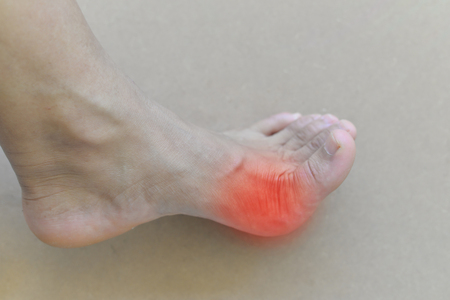
A condition often seen in our office this time of year is gout. Gout is a condition that affects the lower extremities, and symptoms of gout are often increased with colder temperatures. Our specialists discuss everything you need to know about this condition, including what it is, its risks, treatments, and so much more!
What Is Gout?
Gout is a type of arthritis that affects the lower extremities. Gout usually develops in adulthood and rarely seen in children. Gout usually develops earlier in adult men (between the ages of 30-45) than in adult women (after age 55). Gout can be triggered by certain festive holiday foods that we tend to consume more during this time of the year. These foods can cause uric acid to excessively build in the body and trigger the symptoms of gout.
The Phases of Gout
The three phases of gout are:
- Gout Flare– This is the initial gout flare that most likely involves a single joint.
- Intercritical Gout– This is the time between gout flares. When gout is treated, flares will rarely occur more than once within two-year intervals.
- Tophaceous Gout– This is a condition that develops after suffering from multiple gout flares. This is a condition that describes the accumulation of urate crystal masses within the body.
What Are the Risks of Developing Gout?
As previously mentioned, certain lifestyle factors will increase your risk of developing gout. The most common lifestyle factors are:
- Certain medications (such as diuretics)
- Dehydration
- Consuming large amounts of meat
- Consuming large number of beverages that contain high fructose corn syrup
- Consuming excessive amounts of alcohol
- Being overweight
- Family history
- Certain medical conditions
- Recent injury or surgery in the lower extremities
- Age and sex
Symptoms of Gout
The most common symptoms of developing gout are:
- Sudden attack of pain in the lower extremities
- Discomfort that does not subside
- Intense joint pain
- Stiffness in the lower extremities
- Signs of limping
- Joints feel hot-to-the-touch
- Inflammation in the lower extremities
- Limited range of motion in the affected area
When To See a Podiatrist
If you are experiencing chronic foot pain or discomfort in your lower extremities, call our Montgomery office at 301-330-5666 and schedule an appointment with our board-certified podiatrist Dr. Jon M. Sherman or visit our website for more information. Please note that our office hours are currently Monday, 10am-5:30pm, and Tuesdays and Thursdays, 10am-5pm. For new or current patients who do not want to come into the office, we are also offering Telehealth video visits. To schedule a Telehealth visit, please call our office.
-
Diabetes Awareness and Education
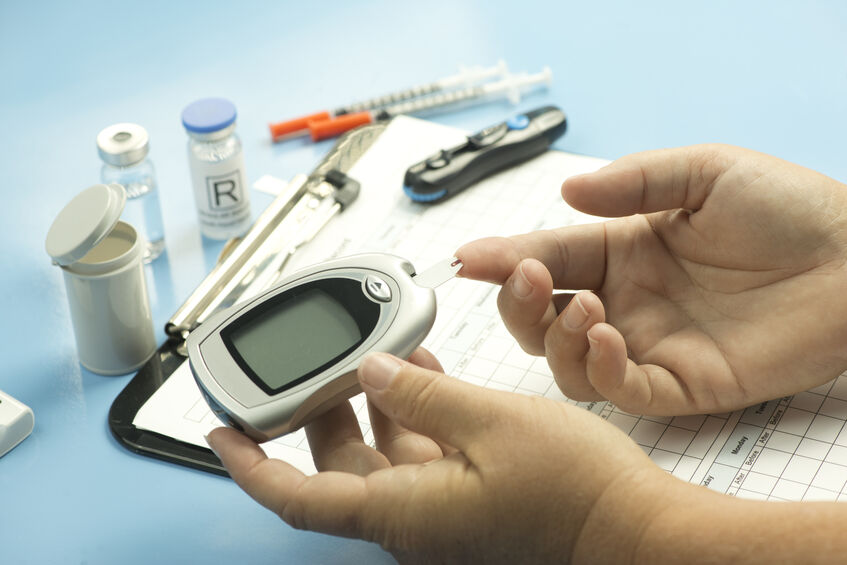
Did you know that more than 29 million Americans have diabetes? Even more frightening, one in four of those individuals are unaware of their condition.
Diabetes is a complex disease that requires daily self-management – making healthy food choices, staying physically active, monitoring your blood sugar, and taking medications as prescribed. Healthy lifestyle adjustments for individuals with diabetes can also help non-diabetic people transform their lives and increase overall health and wellness while also helping prevent a variety of health conditions later in life!
What is diabetes?
There are three main types of diabetes:
- Type 1 diabetes – This is when your body does not make insulin to take the sugar (glucose) from the foods you eat and turn it into energy for your body. If you have type 1 diabetes, you need to take insulin every day to live.
- Type 2 diabetes – This is when your body does not make or use insulin well. You might need to take pills or insulin to help control your diabetes. Type 2 is the most common type of diabetes.
Why is diabetes serious?
Diabetes can cause health problems such as heart attack or stroke, eye problems, nerve damage, kidney problems, foot problems, and teeth and gum problems. People with diabetes need to make healthy food choices, stay at a healthy weight, get physical every day, and take their medicines even when they feel good. It is a lot to do. It’s not an easy lifestyle for some, but it’s worth the benefits.
Diabetes and Your Feet
Foot problems most often happen when there is nerve damage, which is most often called neuropathy. This can cause tingling, pain, or weakness in the feet. It can also cause loss of feeling in the foot, so you could possibly injure it and not even know it. Poor blood flow or changes in the shape of your feet or toes may also appear. It is especially important for diabetes patients to take good care of their feet and see their doctor right away if you see any signs of foot problems.
If you are experiencing chronic foot pain or discomfort in your lower extremities, call our Montgomery office at 301-330-5666 and schedule an appointment with our board-certified podiatrist Dr. Jon M. Sherman or visit our website for more information. Please note that our office is currently open Monday, 10am-5:30pm, and Tuesdays and Thursdays, 10am-5pm.
-
What Is a Podiatrist?
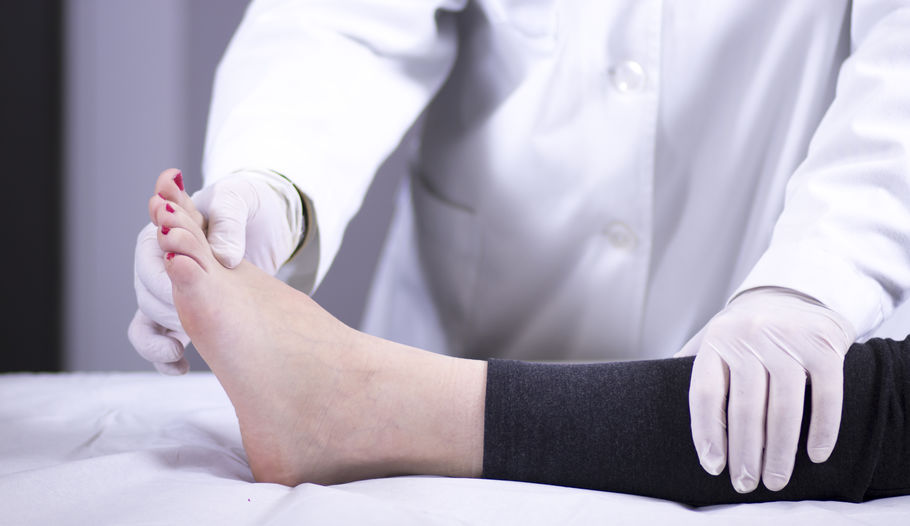
Around the world, podiatrists pursue the advancement of the Podiatry field for everyone’s benefit, and, to better serve those who suffer from ankle and foot conditions. Your feet are vital to your everyday life. They permit you to walk 150,000 miles in your lifetime, which is equal to walking around the world six times! Foot issues can be debilitating; therefore, it is important to take care of your feet.
People may wonder why there is a branch of medicine that deals strictly with feet. It’s because foot problems are very common. A few of the most common issues people have with their feet include:
- Bunions
- Athlete’s foot
- Ingrown toenails
- Diabetic neuropathy
- Plantar fasciitis
- Corns
- Heel spurs
- Blisters
Education and Awareness
Our team of experts at Kentlands Foot and Ankle Center strive to elevate awareness about the importance of proper foot health. That is one of the reasons we wanted our patients to be able to access reliable and accessible information that pertains to the lower extremities. If you would like to get involved, you can help spread the word about podiatry and important foot health tips! When you’ve learned more about proper foot health, you can begin spreading the word and educating others. Start here:
- Read up on health conditions related to the feet, including information on keeping your feet healthy.
- Proper daily foot care involves activities like caring for your toenails and wearing the right shoes.
- Learn to maintain good foot health
- Have an in-person conversation or by using social media to discuss podiatry and foot health.
When To See a Podiatrist
Anytime you experience foot or ankle discomfort, changes in the appearance of your feet, abnormal growth(s), or have an underlying medical condition that affects your feet or ability to function. Symptoms are not always obvious and may even continue unnoticed. If you or anyone you know is experiencing one or more symptoms, it is time to see a podiatrist.
Schedule An Appointment
If you are experiencing chronic foot pain or discomfort in your lower extremities, call our Montgomery office at 301-330-5666 and schedule an appointment with our board-certified podiatrist Dr. Jon M. Sherman or visit our website for more information.
-
Benefits of Custom Orthotics
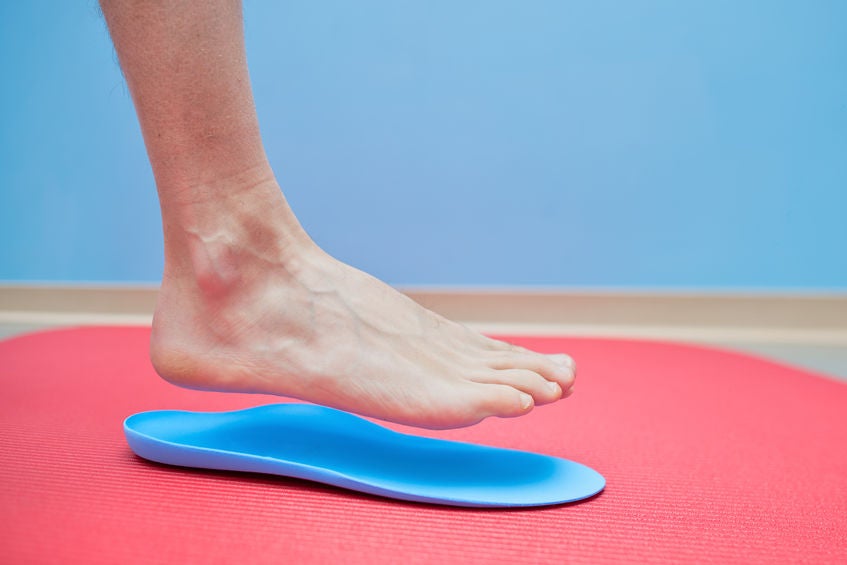
We have all heard the saying “one size fits all.” Unfortunately, when it comes to footwear, this does not apply. Sometimes you might notice that one foot feels slightly different from the other. It is due to each person having their own unique feet! At Kentland’s Foot and Ankle Center, patients are examined and treated based on their own unique feet. Our podiatry team recommends using foot orthotics if foot muscles, ligaments, bones, or tendons are not aligned well or the patient is experiencing discomfort. Orthotics are known to redistribute the pressure that your feet endure each day.
Custom Orthotics VS Over-the-counter Orthotics
Over-the-counter foot orthotics are usually found at drugstores. The use of orthotics, in general, can be very helpful in eliminating foot discomfort quickly. For chronic foot pain, we always advise our patients to get fitted for custom foot orthotics. Precise measurements of your foot are documented and sent to a lab where they will make your orthotics. It ensures that you receive all the support your feet need.
Benefits of Custom Orthotics
Custom orthotics are known to:
- Provide superior comfort allowing you to stand, walk and run comfortably
- Fight off pain in the lower extremities
- Improve balance by allowing your feet the support to maintain a functional position
- Enhance athletic performance
- Lower the risk of injury
Custom orthotics help your feet feel better, but did you know they also help your overall body? Custom orthotics are also known to:
- Reduce ankle and leg pain
- Maintain balance
- Stand or walk for extended periods of pain-free
- Reduce lower back pain
- Lower the risk of calluses, corns, and bunions
- Improve posture
Final Thoughts
If you are experiencing chronic foot pain or discomfort in your lower extremities, call our Montgomery office at 301-330-5666 and schedule an appointment with our board-certified podiatrist Dr. Jon M. Sherman or visit our website for more information.
-
Preparing For Your Next Appointment
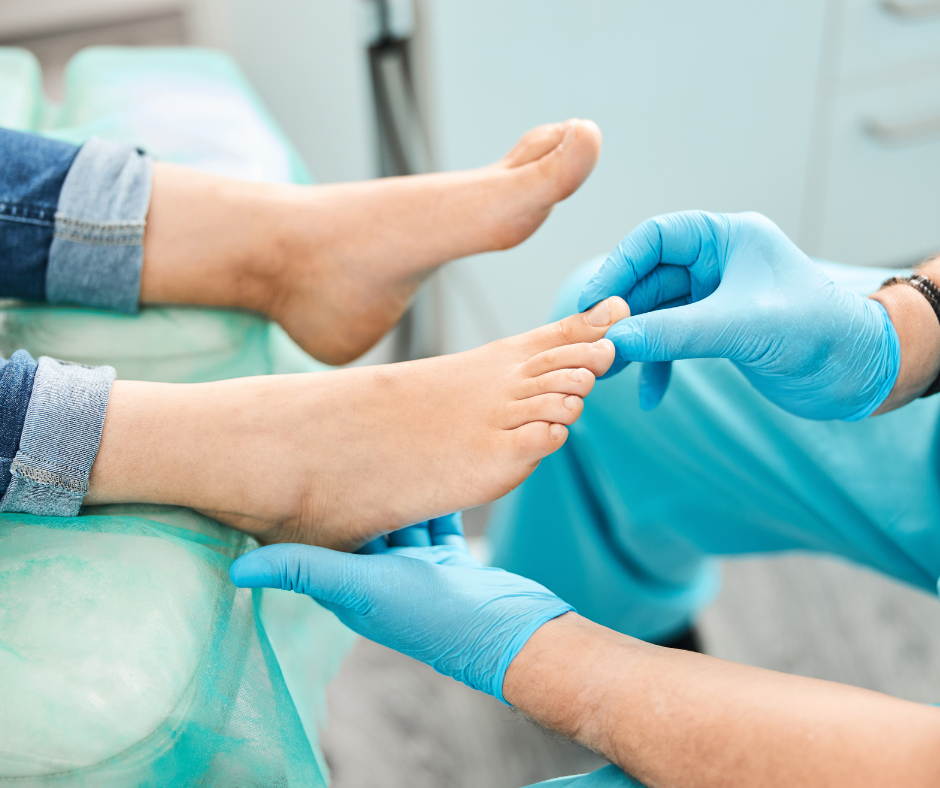
A doctor visit can be nerve-wracking, especially if this is your first time at a podiatrist’s office. But with some simple preparation, you can limit the anxiety you feel prior to your appointment and make the most out of seeing your specialist. At Kentlands Foot and Ankle Center, we take extra care in making sure your visit is as comfortable and helpful as possible! Below is a useful guide to help you prepare for your next appointment.
Before Your Visit
It might be helpful to make a physical or mental checklist of some important information to make your podiatrist’s questions easier to answer, such as:
- The symptoms you’re experiencing
- Any medication you’re taking
- Relevant lab test results
- Allergies they should know about
- Previous surgeries
- Any questions or concerns you have for your doctor
During Your Visit
- Expect your podiatrist to go over all the information listed above
- Be sure to ask for any clarification if you’re unclear with what your doctor is saying
- Take notes if you find it helpful
- If you’re attending a virtual appointment, be sure you arrive to your appointment on time and check that your technology is working properly
After Your Visit
- Make sure you follow your podiatrists’ recommendations for healing and recovery
- Pick up any medication your doctor may prescribe and take them as instructed
- Schedule a follow up appointment if necessary
- If your doctor has not gotten back to you with test results, give them a call
- Reach out to your podiatrist if you have any follow up concerns or questions
Schedule A Visit
It is recommended that you visit your local podiatrist once a year for an annual checkup. If you’ve been experiencing any foot or ankle pain, schedule an appointment with a podiatrist so they can examine and treat any problem you might be facing. To schedule an appointment with our board-certified podiatrist Dr. Jon M. Sherman, at our Montgomery County office, call 301-330-5666 or visit our website for more information.
-
UV Safety Awareness Month
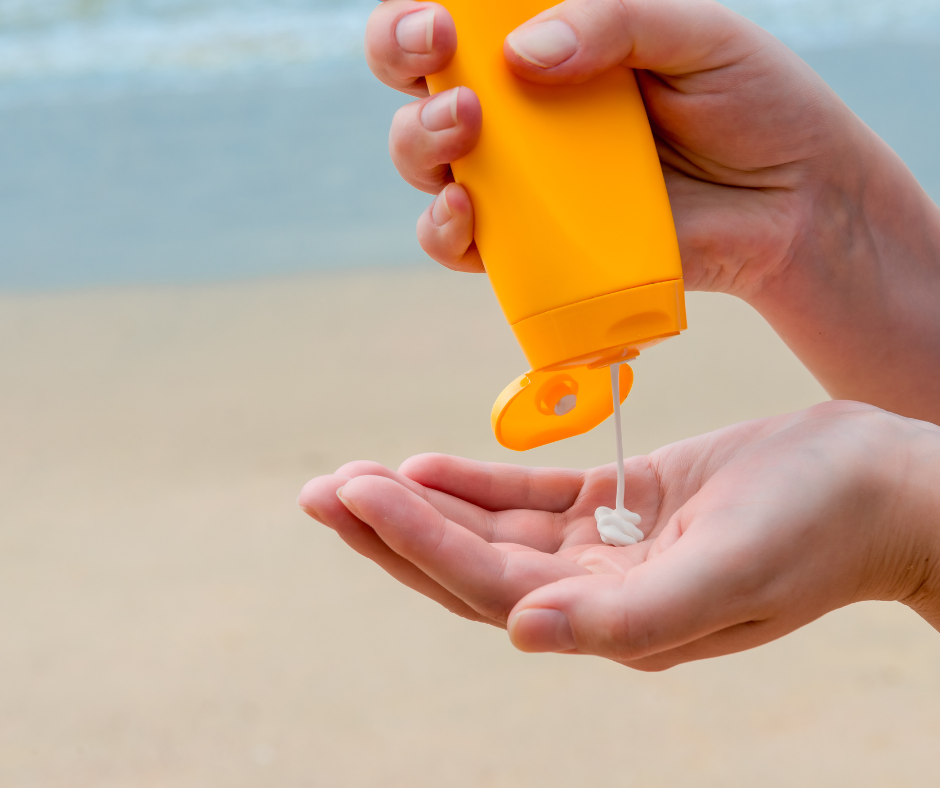
Summer is finally here! The great outdoors is beckoning. Many people tend to forget that their feet and ankles are just as vulnerable to harmful UV rays as the rest of their bodies. Sunlight is a potent source of ultraviolet radiation. Overexposure to the sun can cause a host of serious health issues such as skin cancer, heat exhaustion, and melanoma. At Kentlands Foot and Ankle Center, we want all our patients to feel safe and protected while still enjoying their favorite summer activities! Below you will find signs of skin cancer and tips and tricks to protect your feet from damaging UV rays.
Learn to recognize the signs of skin cancer. A helpful way to remember the signs of skin cancer is ABCDE:
- A is for asymmetry. Most moles are symmetrical. If you find a mole that is not symmetrical, bring it to your doctor’s attention.
- B is for borders. Be alert to a new or changed mole with irregular borders.
- C is for color. If you spot a mole with an unusual color, get it checked.
- D is for diameter. Any mole larger than the eraser on the tip of a pencil should be considered suspect.
- E is for evolving. Healthy moles don’t change.
How To Protect Your Feet from Damaging UV Rays
- Always Apply Sunscreen. Most dermatologists recommend using sunscreen with an SPF of at least 30. This will protect your skin from 97% of the sun’s harmful UV radiation.
- Wear Shoes That Protect Your Feet. Flip-Flops and sandals are a summer favorite. But they are not the best choice for protecting your feet from the elements. Shoes such as Crocs can protect your feet while also allowing your feet to breathe. Plus, they are waterproof!
- Cover Your Skin. Get settled under a tree or canopy. Alternatively, use breathable fabrics to keep you cool and protected from the sun!
- Avoid Peak Sun-Times. In most places, the sun is usually the strongest from 10 am to 4 pm. If you are outside during these times, take precautionary measures and incorporate all our tips.
- Drink Plenty of Water every day. Remembering to stay hydrated is especially important in the summer sun. The U.S. National Academies of Sciences, Engineering, and Medicine determined that an adequate daily fluid intake to replenish your body is: About 15.5 cups (3.7 liters) of fluids a day for men. About 11.5 cups (2.7 liters) of fluids a day for women. When perspiring, drink even more water.
Board-certified podiatrist Dr. Jon M. Sherman uses advanced technology and can treat a wide range of patients. To schedule an appointment, please call our Montgomery County office at 301-330-5666 or visit our website for more information.
-
Global Running Day
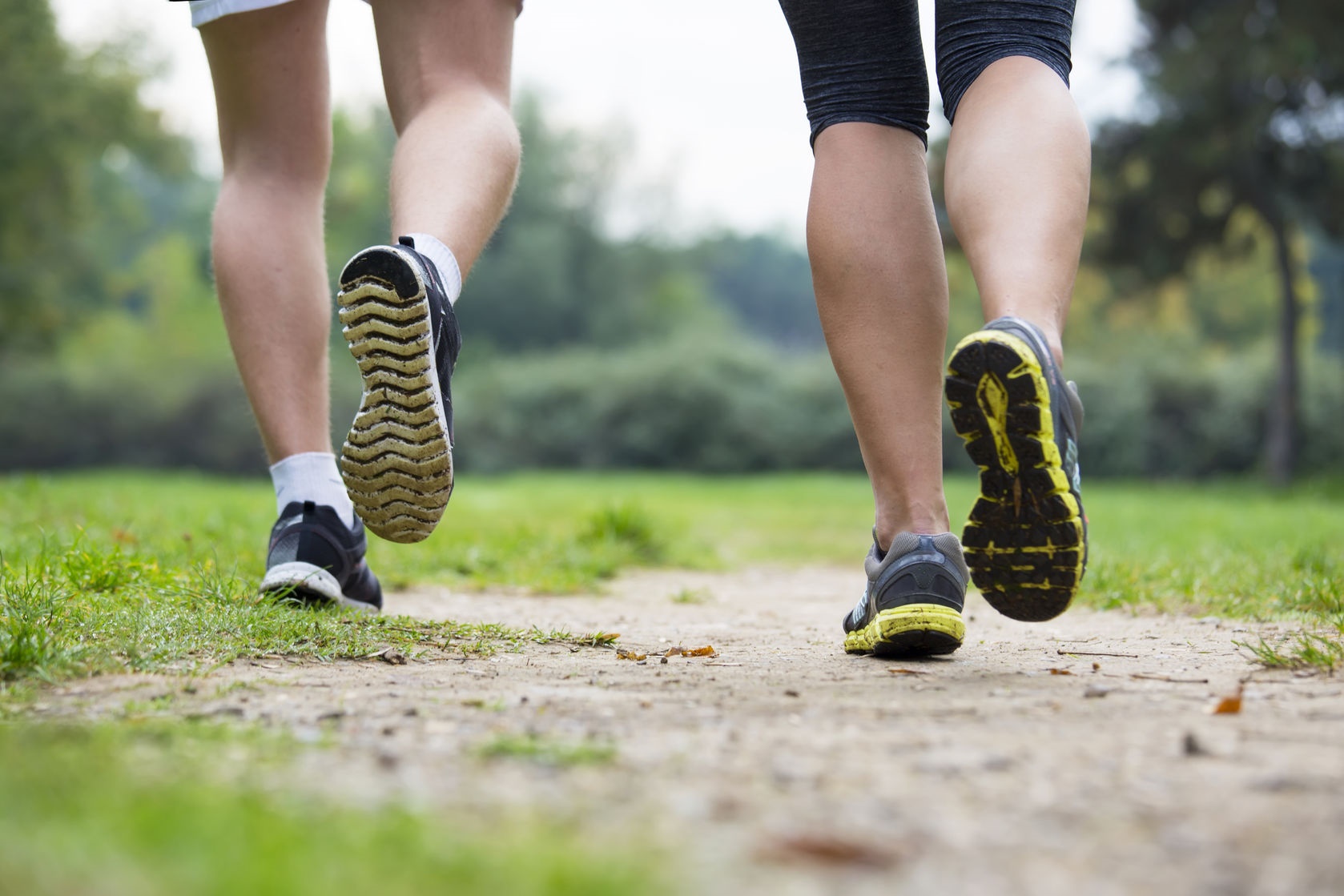
Get your legs moving on the first Wednesday of June and celebrate Global Running Day! Whether you are a regular runner or a beginner, celebrating Global Running Day can be simple and exciting. At Kentlands Foot & Ankle Center, we want to inspire and support our patients to live healthy lifestyles. Below we have curated all the ins and outs of Global Running Day.
What Is Global Running Day?
Global Running Day is a worldwide celebratory movement to encourage people of all ages to get moving. Regardless of the experience or ability, Global Running Day serves as a reminder of the power of movement and unification. No matter where you run, we are all in this together to encourage each other to keep moving, stay connected, and be healthy.
Traditions
Every year for Global Running Day, millions of people worldwide pledge to participate in some running activity by submitting their names to the Global Running Day website. Traditionally, a 5k race would be held, or folks would hit the trails. Regardless of where you decide to get moving, Global Running Day celebrates the history of running- what running means to our ancestors and what running means today.
Global Running Day in Numbers
- 59,838,621 – the number of race miles runs in the U.S. in 2020.
- 55% – the percentage of women who accounted for road race finishers in 2019.
- 518,000 – the number of Americans who finished a marathon in 2019.
- $2.46 billion – the amount spent on running shoes in 2011.
Running Self Care
At Kentlands Foot & Ankle Center, we want to remind all our patients of the importance of self-care, especially when it comes to physical activities.
- Take At Least One Rest Day a week to allow your muscles to recover and rebuild.
- Fuel Up on High-Carb, and Moderate Protein Meals 3–4 hours before a long-distance training run or event. In the 30–60 minutes leading up to a run, stick with a light, high-carb snack.
- For any run that lasts longer than 90 minutes, make sure to fuel up with a refreshing sports drink and continue to stop and take water breaks.
Visit Your Podiatrist. At least once every year, you should check in with your podiatrist. A podiatrist can examine your feet and treat any potential problems before they worsen. To schedule an appointment with our board-certified podiatrist Dr. Jon M. Sherman, at our Montgomery County office, call 301-330-5666 or visit our website for more information.
-
May Is National Arthritis Awareness Month
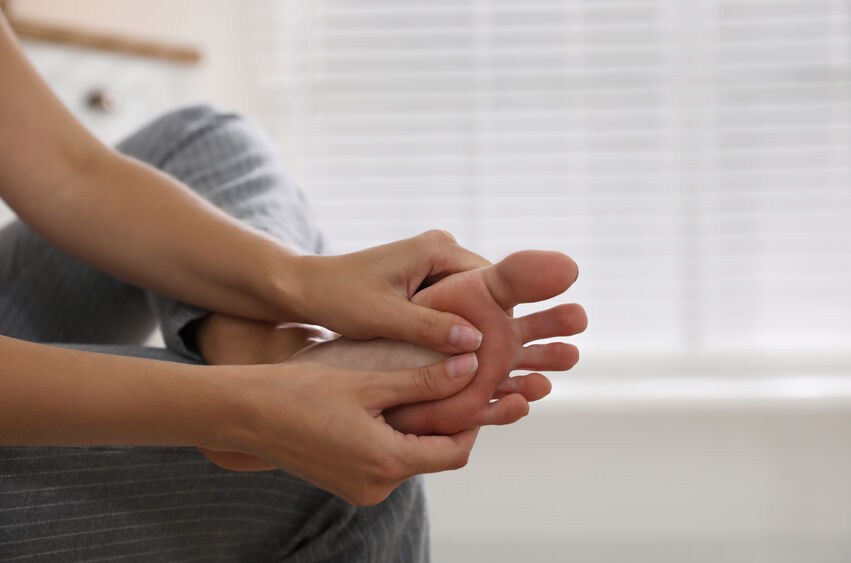
Every year, the month of May is recognized to motivate Americans to get up and moving while raising funds for arthritis research, support, and advocacy. Arthritis occurs when joints are swollen or tender and can affect people of all different ages. Arthritis is one of the most widespread health conditions in the United States. The first steps in overcoming the challenges with arthritis are understanding the condition and knowing there are many resources to help. Below you will find fast facts about arthritis, signs and symptoms, prevention tips, and helpful resources.
Astonishing Arthritis Facts
- More than 40 million Americans have been diagnosed with Arthritis.
- There are more than 100 forms of this crippling disease.
- It affects an estimated 53 million adults and 300,000 children.
- Experts believe that the number of people diagnosed with Arthritis will grow as our nation’s population gets older.
- Arthritis is common among people with other chronic conditions including obesity, diabetes, and heart disease.
- The most common types of Arthritis include:
- Osteoarthritis
- Rheumatoid Arthritis
- Psoriatic Arthritis
- Fibromyalgia
- Gout
Signs Of Arthritis
Recognizing the symptoms can help you get the correct diagnosis. Arthritis symptoms can include:
- Difficulties with moving and performing daily tasks
- Pain
- Stiffness
- Swelling
- Redness
- Decreased range of motion
Arthritis Prevention
- Get Moving. Walking is a fantastic way for people with Arthritis who live in rural areas to be physically active. For those uncertain about walking, proven programs such as Walk With Ease can help people get started.
- Build Connections. The Arthritis Foundation can help you find and build support for your journey during Arthritis Awareness Month with tips on nationwide events, treatment, and diet.
- Protect Your Joints. Avoid holding one position for too long or holding a position that puts extra stress on joints.
- Manage Your Weight. Maintaining a healthy diet that consists of lots of vegetables, some fruits, and whole grains has been proved to support overall wellbeing.
- Talk With Your Doctor. Advocate for yourself and make sure that you get the care you need.
When To See a Podiatrist
Podiatrists are a part of the care team when joint pain occurs in a patient’s feet or ankles. At Kentlands Foot and Ankle Center, we strive to provide the best care to our patients. Board-certified podiatrist Dr. Jon M. Sherman uses advanced technology and can treat a wide range of patients. To schedule an appointment, please call our Montgomery County office at (301) 330-5666 or visit our website for more information.
-
Put Your Best Foot Forward
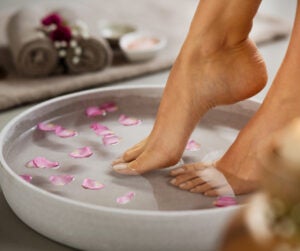
April is National Foot Health Awareness Month and it is also the perfect time to think about how much we count on our feet each day, and how important it is to develop healthy habits to keep them free of pain. According to the American Podiatric Medical Association, approximately 20 percent of the U.S. population has at least one-foot problem annually. At Kentlands Foot and Ankle Center, our podiatrist, Dr. Jon M. Sherman, is Board Certified in Foot Surgery by the American Board of Podiatric Surgery. Dr. Sherman is also a Fellow of the American College of Foot and Ankle Surgeons, all of which set him apart from other podiatrists.
Fun Facts About Feet
- Each foot is composed of 26 bones, 33 joints, and over 100 muscles and tendons.
- Together both feet contain 1/4 of the bones in the entire body.
- The average person, over their lifetime, will walk approximately the same distance as if they had walked around the earth 4 times.
- 5 times a person’s body weight is transmitted through each foot with every step!
How To Maintain Healthy Feet
Do:
- Try foot massages or reflexology.
- Soak your feet in Epsom salt if they are sore.
- Change your socks daily.
Don’t:
- Share footwear
- Wear poor-fitting shoes
- Try “DIY” fixes for your foot problems
When To Visit a Podiatrist
The field of podiatry strives to improve the overall health and well-being of patients by focusing on preventing, diagnosing, and treating conditions associated with the foot and ankle. It is time to see a podiatrist anytime you have foot or ankle discomfort, changes in the appearance of your feet, abnormal growth, an injury, or a medical condition that affects your feet. It is also very important to have an annual check-up with your podiatrist to maintain healthy feet.
To schedule an appointment at our Gaithersburg, MD office, please call (301) 330-5666 or visit our website for more information.
RECENT POSTS
categories
- Uncategorized
- Featured Articles
- Foot Disorders
- Broken Ankle
- Broken Toe
- Fracture
- Foot Health
- Foot Care
- Arthritis
- Foot Pain
- Skin Cancer
- Podiatry Appointment
- Custom Orthotics
- Podiatrist
- Diabetes
- Gout
- Heart Health
- National Nutrition Month
- National Foot Health Awareness Month
- Foot Safety
- Foot and Ankle Injuries
- Falls Prevention
- Chronic Heel Pain
- Shoes
- Laser Therapy
- Quoted
- Physical Therapy
- KeryFlex
- Sweat
- Summer Foot Care
- Sports Injury
- ESWT
- Fungal Toenails
- Bunion
- Plantar Fasciitis
- PinPointe Laser


